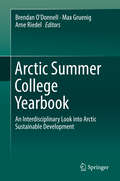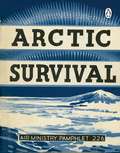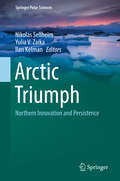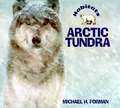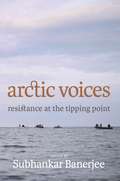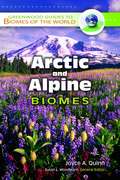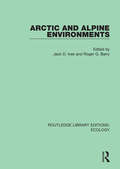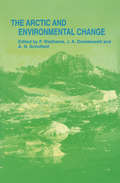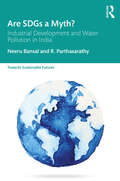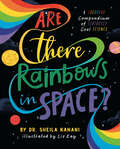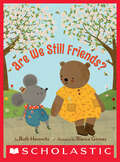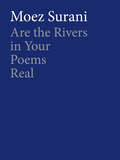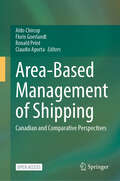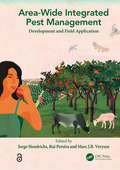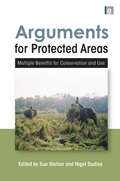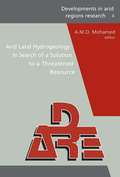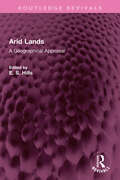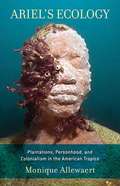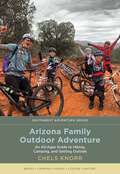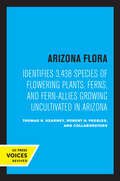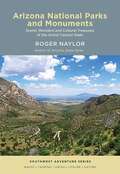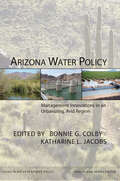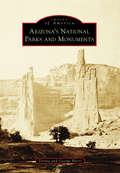- Table View
- List View
Arctic Summer College Yearbook: An Interdisciplinary Look into Arctic Sustainable Development
by Brendan O'Donnell Max Gruenig Arne RiedelThis book highlights both the diversity of perspectives and approaches to Arctic research and the inherent interdisciplinary nature of studying and understanding this incomparable region. The chapters are divided into four liberally-defined sections to provide space for dynamic interpretation and dialogue in search of sustainable solutions to the issues facing the Arctic. From governance to technology, scientific research to social systems, human health to economic development, the authors discuss fundamental questions while looking toward the Arctic's future. Whether the reader is well-versed in the history and complexity of Arctic policy or looking for an insightful introduction to the vast world of Arctic research, everyone will find answers that lead to new questions and even more discoveries in these pages, laying the foundation for tomorrow's discussion on the future of the Arctic. The Arctic's unique geographic and political characteristics pose questions for the international community, indigenous peoples, and economic interests not easily answered through traditional concepts. To that end, the Arctic Summer College has been engaging leading professionals, students, scholars, and policy makers from across the globe to exchange ideas and support further investigation into the Arctic. A joint venture between Ecologic Institute US and Ecologic Institute Berlin (Germany), the College participates at the annual Arctic Circle Assembly in Reykjavik, Iceland, and continues to be at the forefront of international collaboration in this critical area of economic, political, environmental, and humanitarian development.
Arctic Survival (Air Ministry Survival Guide #1)
by A.M. Pamphlet 226THE ULTIMATE SURVIVAL GUIDE for anyone who thinks they'd survive the world's most hostile environments - or at least imagine they could do.-----------------------------First issued to airmen in the 1950s, the Air Ministry's Sea Survival guide includes original and authentic emergency advice to crew operating over the ocean. With original illustrations and text, these survival guides provide an insight to military survival techniques from a by-gone era. Packed with original line drawings and instruction in:- The best faces to pull to prevent frostbite and when you can expect bits of you to 'fall off', should you fail- How to build a structurally sound igloo- How to fashion a mask to prevent snowblindnessFocussing on the harshest of situations one can find oneself in, Arctic Survival is one of four reprints of The Air Ministry's emergency survival pamphlets. Others include:Jungle SurvivalDesert SurvivalArctic Survival
Arctic Triumph: Northern Innovation and Persistence (Springer Polar Sciences)
by Ilan Kelman Nikolas Sellheim Yulia V. ZaikaThis book approaches the challenges the Arctic has faced and is facing through a lens of opportunity. Through pinpointed examples from and dealing with the Circumpolar North, the Arctic is depicted as a region where people and peoples have managed to endure despite significant challenges at hand. This book treats the ‘Arctic of disasters’ as an innovated narrative and asks how the ‘disaster pieces’ of Arctic discourse interact with the ability of Arctic peoples, communities and regions to counter disaster, adversity, and doom. While not neglecting the scientifically established challenges associated with climate change and other (potentially) disastrous processes in the north, this book calls for a paradigm shift from perceiving the ‘Arctic of disasters’ to an ‘Arctic of triumph’. Particular attention is therefore given to selected Arctic achievements that underline ‘triumphant’ developments in the north, even when Arctic triumph and disaster intersect.
Arctic Tundra
by Michael H. FormanThousands of complex animal and plant species make their home in the Arctic tundra. By looking at small, specialized habitats, this series brings to life the multiple complexities present in even the most common or simple environments.
Arctic Voices: Resistance at the Tipping Point
by Subhankar BanerjeeA pristine environment of ecological richness and biodiversity. Home to generations of indigenous people for thousands of years. The location of vast quantities of oil, natural gas and coal. Largely uninhabited and long at the margins of global affairs, in the last decade Arctic Alaska has quickly become the most contested land in recent US history. World-renowned photographer, writer, and activist Subhankar Banerjee brings together first-person narratives from more than thirty prominent activists, writers, and researchers who address issues of climate change, resource war, and human rights with stunning urgency and groundbreaking research. From Gwich'in activist Sarah James's impassioned appeal, "We Are the Ones Who Have Everything to Lose," during the UN Climate Conference in Copenhagen in 2009 to an original piece by acclaimed historian Dan O'Neill about his recent trips to the Yukon Flats fish camps, Arctic Voices is a window into a remarkable region.Other contributors include Seth Kantner, Velma Wallis, Nick Jans, Debbie Miller, Andri Snaer Magnason, George Schaller, George Archibald, Cindy Shogan, and Peter Matthiessen.
Arctic and Alpine Biomes (Greenwood Guides to Biomes of the World)
by Joyce A. QuinnThe latest entry in the Guides to Biomes of the World series from Greenwood Press focuses on arctic and alpine climate zones, also known as the tundra, and provides a detailed study of the hardiest flora and fauna on the planet. Quinn (California State U., Fresno) offers straightforward descriptions of each of these biomes, dividing the information between arctic, Antarctic, alpine and even tropical alpine biomes such as the Andes and the highest zones of Hawaiian volcanoes. Written primarily as a textbook for geography students, this book also features vivid color photographs from these regions.
Arctic and Alpine Environments (Routledge Library Editions: Ecology #6)
by Jack D. Ives; Roger G. BarryOriginally published in 1974, Arctic and Alpine Environments examines, the relatively simple ecosystems of arctic and alpine lands that still occupy extensive areas little disturbed by modern technology. The book argues that there is a necessity for carefully controlled development of the resources of these regions and suggests that there is a risk of irreversible disturbance without full understanding of these regions. This book provides a detailed documentation of cold-stressed arctic and alpine terrestrial environments and systematically deals with the present and past physical environment – climate, hydrology and glaciology; biota – treeline, vegetation, vertebrate zoology, and historical biogeography; abiotic processes – geomorphological and pedological and the role of man – bioclimatology, archaeology and technological impact, including radioecology. The book will appeal to academics and students of environmental and biological science, as well as providing a significant source for conservationists’, government agencies and industrial organizations.
Arctic and Environmental Change
by J. A. DowdeswellThis timely book presents a wide-ranging review of Arctic environmental change in response to global warming, and gives a broad insight into the transformation of the Arctic which we can expect during the next century. It is in high northern latitudes that we can expect to observe global warming at its most powerful, making it a natural laboratory where climate changes and their impacts can be monitored and studied more readily than elsewhere in the world. Fourteen authoritative reviews cover the predictions of warming rates by General Circulation Models; variabilities in atmospheric circulation and moisture flux; the dynamics of the polar vortex in the Arctic and its role in ozone loss; the countervailing influence of air pollution in reducing solar irradiance; and the impact of climatic change on Arctic terrestrial and marine ecosystems. Also detailed are the thermohaline circulation of the ocean, the extent and thickness of sea ice, the sizes of glaciers and ice sheets, and the extent of permafrost. Moving to past changes, the records from Greenland ice cores and deep ocean drilling are reviewed for what they tell us about past climates and glaciation in the Arctic., The book paints a vivid and disturbing picture of the enhanced warming that can be expected in the Arctic relative to lower latitudes, and of the major impacts that this will have on the northern cryosphere. It will be an invaluable reference for anyone seeking a greater understanding of the factors and processes affecting the arctic environment, which may ultimately have a major impact on global climatic change.
Arcticologies: Early Modern Actions for Our Warmer World
by Lowell DuckertExploring the frozen past to rethink our warming future Do we really know what cold is? In Arcticologies, Lowell Duckert delves into early modern European texts to trace how representations of frigidity from the sixteenth and seventeenth centuries have contributed to historical understandings of climate and contemporary debates on climate change. Arguing that human culture and science are, in fact, indebted to the cold, Duckert suggests that these early depictions offer critical terms for advancing the aims of climate-change activism and assisting in counterapocalyptic thinking. An imaginative and intellectual journey, Arcticologies reveals the enduring role of cold in wide-ranging storytelling traditions. It draws on Shakespeare&’s Hamlet and Othello and the works of Thomas Dekker, René Descartes, and Thomas Hobbes and is informed throughout by contemporary Indigenous writing, including that of Sheila Watt-Cloutier and Leanne Betasamosake Simpson. In reflecting on these assorted accounts, Duckert sees cold as not only an environmental hardship but a source of cultural creativity and resilience, highlighting moments of collaboration between humans and the icy world, from arctic exploration to urban fairs on frozen rivers. Cold, Duckert makes clear, is more than the absence of warmth. Situating our contemporary obsession with impending planetary meltdown within the mazelike arcticologies of the past, Duckert shows how early modern cold brought about forms of curiosity, vocabulary, and interspecies relationality that can serve us today. In doing so, he asks us to identify what has been lost and who is at risk in today&’s thinning cold—while also urging us to imagine alternative futures focused not on inevitable and total collapse but on adaptation and preserving what remains.
Are SDGs a Myth?: Industrial Development and Water Pollution in India (Towards Sustainable Futures)
by R. Parthasarathy Neeru BansalThis book discusses the continued emphasis on development gains in India’s national policies and its quest to meet sustainable development goals. It offers an analysis of the laws and infrastructure for environment protection in the country and their ineffectiveness in dealing with the water pollution which has had dire consequences on India’s ecological landscape. The book, while highlighting the need and importance of industrial development, argues for sustainable measures to moderate and monitor such developmental efforts in light of severe environmental degradations. Focusing on the state of Gujarat, it looks at published and un-published data on industrial development and water pollution levels and data obtained via applications filed under the Right to Information Act. It also offers a detailed account of the concentration of red industries which release the most hazardous pollutants and their effects on the environment. The authors look at the data from a theoretical and empirical perspective, offering insights into how the checks and balances levied by the state have been violated. They highlight the patterns and trends which emerge from the study of these developmental efforts and underline the need to improve the effectiveness of policy instruments, and the need to diversify the existing mechanisms. The book will be of great interest to students and researchers of environment and development studies, public policy, sociology, law and governance, human ecology and economics.
Are There Rainbows in Space?: A Colorful Compendium of Seriously Cool Science
by Sheila KananiWhat color is a polar bear under its fur? How do flamingos turn pink? What is a blue moon? Find the answers to all these fun questions and much more in this fact-filled adventure into the colorful world around us!The science of colors is hard at work all the time—from ultraviolet light to the baby blue tint of the sky. Readers will learn tons of interesting scientific facts about color and its whys and hows—like why blood is red, how hippos keep cool, and how some animals can change color to hide from predators. Bursting with incredible illustrations and some seriously cool science, this book is sure to dazzle both nature lovers and reluctant readers alike.
Are We Pears Yet?
by Miranda PaulTwo seeds can't wait to be pears, but growing takes time and patience in this funny and informative picture book from Miranda Paul, the author of Water is Water."When will we be pears?" —"After we find soil." "Hooray! We are going to be pears! Are we pears yet?" —"No! Just be patient and wait."Written entirely in dialogue and staged as a play, Are We Pears Yet? is a clever and hilarious informational picture book that will make you look at growth cycles and fruit trees in a whole new way. Carin Berger's artfully composed collaged stage sets will delight and amaze you.
Are We Still Friends?
by Ruth HorowitzBeatrice and Abel are the finest of friends. Beatrice raises bees. Abel grows apples. In summer, they gather sticky, sweet honey together, and in fall, they harvest ripe, red fruit. They make a perfect pair in every season, and so do the bees and the trees.Until one spring morning, Abel startles a bee--ZING!--and gets stung. "WHEE HEE HEE!" he cries. But Beatrice hears only the silly sounds and laughs. OUCH! Is their friendship strong and steady enough to weather the stinging words and messy quarrel that stem from misunderstanding?Friendship and nature form the perfect pair in this warm and winsome celebration of teamwork, ecology, and the art of saying "I'm sorry."
Are the Rivers in Your Poems Real
by Moez SuraniAmidst the dangers of figurative language, the coercion of sentimentality, and the insidious freight of abstraction, these poems embody the necessity for the critical, the communal, the real. Are the Rivers in Your Poems Real uses conceptual critiques of public discourse and experimental social cartographies, as well as lyrics of intimacy, to defy prescribed ways of being. This is an act of resistance against dangerous and domineering narratives, and the power they inscribe.
Area-Based Management of Shipping: Canadian and Comparative Perspectives
by Claudio Aporta Aldo Chircop Floris Goerlandt Ronald PelotThis open access book fills a gap in the literature on shipping in a number of cross-cutting fields (including marine transportation law and policy, law of the sea, Indigenous rights, marine environmental management, and risk and safety studies). Moreover, the book includes a focus on the consideration of Indigenous rights in shipping, a topic of emerging importance. There are, to our knowledge, no directly competing titles with the same interdisciplinary approach to conceptualize, understand, and describe best practices for area-based management approaches. There are, however, related titles which cover some aspects of area-based management, usually from narrow disciplinary perspectives. Area-based management in the governance of shipping has become a useful and effective approach to promote maritime safety, maritime security, and pollution prevention and to mitigate the adverse impacts of shipping on the marine environment and coastal communities. Based on the results of a research project and a major workshop convened at Dalhousie University in Canada, this book consists of multidisciplinary studies and analyses of major issues pertaining to area-based management in shipping from a comparative perspective, but with the principal focus on Canada. The book contains both theoretical and empirical contributions.
Area-wide Integrated Pest Management: Development and Field Application
by Jorge Hendrichs; Rui Pereira; Marc J.B. VreysenOver 98% of sprayed insecticides and 95% of herbicides reach a destination other than their target species, including non-target species, air, water and soil. The extensive reliance on insecticide use reduces biodiversity, contributes to pollinator decline, destroys habitat, and threatens endangered species. This book offers a more effective application of the Integrated Pest Management (IPM) approach, on an area-wide (AW) or population-wide (AW-IPM) basis, which aims at the management of the total population of a pest, involving a coordinated effort over often larger areas. For major livestock pests, vectors of human diseases and pests of high-value crops with low pest tolerance, there are compelling economic reasons for participating in AW-IPM. This new textbook attempts to address various fundamental components of AW-IPM, e.g. the importance of relevant problem-solving research, the need for planning and essential baseline data collection, the significance of integrating adequate tools for appropriate control strategies, and the value of pilot trials, etc. With chapters authored by 184 experts from more than 31 countries, the book includes many technical advances in the areas of genetics, molecular biology, microbiology, resistance management, and social sciences that facilitate the planning and implementing of area-wide strategies. The book is essential reading for the academic and applied research community as well as national and regional government plant and human/animal health authorities with responsibility for protecting plant and human/animal health.
Arguments for Protected Areas: Multiple Benefits for Conservation and Use
by Nigel Dudley Sue StoltonMost protected areas (e.g.national parks and nature reserves) have been created to protect wildlife and land- and seascape values. They currently cover over 13% of the world's land surface, around 12% of marine coastal areas and 4% of the marine shelf. Retaining and expanding these areas in the future will depend on showing their wider benefits for society. This book provides a concise and persuasive overview of the values of protected areas. Contributing authors from over fifty countries examine a wide range of values that are maintained in protected areas, including food, water and materials; health; tourism; cultural and spiritual values; and buffering capacity against climate change and natural disasters. The book also considers the role of protected areas in poverty reduction strategies, their relationship with traditional and indigenous people and in fostering conflict resolution through peace parks initiatives. The chapters draw on a series of authoritative reports published by WWF over recent years under the 'Arguments for Protection' banner, in association with various partners, and on additional research carried out especially for the volume. It analyses the opportunities and limitations of protected areas for supplying the various values along with practical advice for planners and managers about maximising benefits. It provides an important contribution to the debate about the role of protected areas in conservation and other aspects of natural resource management and human livelihoods. Published with WWF
Arid Land Hydrogeology: Proceedings of the Third Joint UAE-Japan Symposium on Sustainable GCC Environment and Water Resources (EWR2006), 28 - 30 January 2006, Abu Dhabi, UAE (Volume IV in DARE series) (Developments in Arid Regions Research Series)
by A.M.O. MohamedThere are many urgent problems in arid land hydrogeology and it is these issues which are tackled in this volume on desert environments. The UAE-Japan symposia provide a venue for the exchange of expertise, confronting such problems as purification, usage and management of groundwater, the assessment and protection of sustainable water resources, a
Arid Lands: A Geographical Appriasal (Routledge Revivals)
by E. S. HillsIn 1951 UNESCO launched an Arid Zone Programme with the object of promoting research into arid regions from every relevant scientific point of view. This book, originally published in 1966, represents the range of research undertaken and gives a general conspectus of arid zone geography. 17 authors from 8 countries contributed and the book deals comprehensively with all the main areas, with specific examples used to illustrate arguments. There are chapters on meteorology, geology, geomorphology, botany and zoology and almost 50% of the book is devoted to man’s activities: irrigation and agriculture; industry; animal breeding and human survival in the desert
Ariel's Ecology: Plantations, Personhood, and Colonialism in the American Tropics
by Monique AllewaertWhat happens if we abandon the assumption that a person is a discrete, world-making agent who acts on and creates place? This, Monique Allewaert contends, is precisely what occurred on eighteenth-century American plantations, where labor practices and ecological particularities threatened the literal and conceptual boundaries that separated persons from the natural world. Integrating political philosophy and ecocriticism with literary analysis, Ariel's Ecology explores the forms of personhood that developed out of New World plantations, from Georgia and Florida through Jamaica to Haiti and extending into colonial metropoles such as Philadelphia. Allewaert's examination of the writings of naturalists, novelists, and poets; the oral stories of Africans in the diaspora; and Afro-American fetish artifacts shows that persons in American plantation spaces were pulled into a web of environmental stresses, ranging from humidity to the demand for sugar. This in turn gave rise to modes of personhood explicitly attuned to human beings' interrelation with nonhuman forces in a process we might call ecological. Certainly the possibility that colonial life revokes human agency haunts works from Shakespeare's Tempest and Montesquieu's Spirit of the Laws to Spivak's theories of subalternity. In Allewaert's interpretation, the transformation of colonial subjectivity into ecological personhood is not a nightmare; it is, rather, a mode of existence until now only glimmering in Che Guevara's dictum that postcolonial resistance is synonymous with "perfect knowledge of the ground. "
Arizona Family Outdoor Adventure: An All-Ages Guide to Hiking, Camping, and Getting Outside (Southwest Adventure Series)
by Chels KnorrWhether you&’re planning your first family adventure or you&’re a seasoned pro, Arizona Family Outdoor Adventure is the definitive guide for families exploring the Grand Canyon State.Experienced writer and adventurer Chels Knorr takes us across Arizona—from the winding slot canyons of the north, past the iconic red rocks of Sedona, and down through the cacti-covered hillsides of the south, with locations for camping, hiking, biking, birding, and stargazing throughout the entire state. Organized geographically with maps, detailed descriptions, and beautiful photography, every activity is graded for difficulty, age-appropriateness, and interest so readers know which are right for their family. Approachable and inclusive, this book embraces the idea that Arizona outdoor adventures are for everyone.
Arizona Flora: Identifies 3,438 Species of Flowering Plants, Ferns, and Fern-Allies Growing Uncultivated in Arizona
by Thomas H. Kearney Robert H. PeeblesNearly every life form found among North American flowering plants is represented in Arizona. This amazing diversity is partly explained by the fact that the altitudinal range extends from a few feet above sea level to approximately 12,000 feet at the summit of the San Francisco Peaks. The life zone range from Arctic-Alpine on these peaks to Lower Sonoran in the southwest and Subtropical in the extreme south. The main objective of this book is to provide means for identifying the approximately 3438 species of flowering plants, ferns, and fern-allies growing without cultivation in Arizona. Keys for identification of the families, genera, and species are provided. Under each species the authors give the geographical distribution within and outside Arizona, and usually the altitudinal range and time of flowering. They describe economic uses, toxic or other properties, and ornamental value of many plants, giving particular attention to the utilization of native plants by the large Indian population of the state. Introductory chapters describe the topography, geology, soils, and climate of Arizona, the several types of vegetation in relation to the physical conditions, and the proportional representation of the larger plant families. There is also a brief account of botanical explorations in Arizona since 1832. This is the only available work on the flora of Arizona that includes the results of intensive, botanical research in the state during the past twenty years. It is based on an earlier publication, Flowering Plants and Ferns of Arizona, issued by the U.S. Department of Agriculture in 1942 and now out of print. For the present revision, a supplementary section of more than fifty pages has been prepared under the direction of John Thomas Howell and Elizabeth McClintock of the California Academy of Sciences. This title is part of UC Press's Voices Revived program, which commemorates University of California Press’s mission to seek out and cultivate the brightest minds and give them voice, reach, and impact. Drawing on a backlist dating to 1893, Voices Revived makes high-quality, peer-reviewed scholarship accessible once again using print-on-demand technology. This title was originally published in 1960.
Arizona National Parks and Monuments: Scenic Wonders and Cultural Treasures of the Grand Canyon State (Southwest Adventure Series)
by Roger NaylorArizona’s national parks and monuments range from places of staggering natural beauty to ancient historic sites. They are spread throughout the state, featuring deserts, mountains, sparkling lakes and rivers, canyons, a forest of fossilized trees, and dazzling cliffs and rock formations. The historic parks reveal Arizona’s past, dating back to the Ancestral Puebloan villages and their rock art. There are Spanish missions, old west forts, Mormon forts, stagecoach routes, and a still-operating trading post that has barely changed in 150 years.Featuring ninety color photographs and maps, Arizona National Parks and Monuments details all thirty-four destinations with an overview of what makes each park unique, a thorough description and history, and information about hiking trails, camping, boating, fishing, tours, and more.A perfect companion volume to his bestselling Arizona State Parks, Roger Naylor’s Arizona National Parks and Monuments is the essential guide to curating your unique Arizona experience, written by “the dean of Arizona travel writers.”
Arizona Water Policy: Management Innovations in an Urbanizing, Arid Region (Issues in Water Resource Policy)
by Bonnie G. Colby and Katharine L. JacobsThe central challenge for Arizona and many other arid regions in the world is keeping a sustainable water supply in the face of rapid population growth and other competing demands. This book highlights new approaches that Arizona has pioneered for managing its water needs. The state has burgeoning urban areas, large agricultural regions, water dependent habitats for endangered fish and wildlife, and a growing demand for water-based recreation. A multi-year drought and climate-related variability in water supply complicate the intense competition for water. Written by well-known Arizona water experts, the essays in this book address these issues from academic, professional, and policy perspectives that include economics, climatology, law, and engineering. Among the innovations explored in the book is Arizona‘s Groundwater Management Act. Arizona is not alone in its challenges. As one of the seven states in the Colorado River Basin that depend heavily on the river, Arizona must cooperate, and sometimes compete, with other state, tribal, and federal governments. One institution that furthers regional cooperation is the water bank, which encourages groundwater recharge of surplus surface water during wet years so that the water remains available during dry years. The Groundwater Management Act imposes conservation requirements and establishes planning and investment programs in renewable water supplies. The essays in Arizona Water Policy are accessible to a broad policy-oriented and nonacademic readership. The book explores Arizona‘s water management and extracts lessons that are important for arid and semi-arid areas worldwide.
Arizona's National Parks and Monuments
by Donna George HartzArizona's 20 national parks and monuments celebrate the natural wonders and rich heritage of Arizona, preserved through the efforts of countless citizens and the American Antiquities Act of 1906. Aggressively implemented by eight US presidents, this legislation permits the president to unilaterally proclaim sites as national monuments without congressional action. The Antiquities Act was applied in Arizona 23 times, more so than any other state in the union. Using more than 200 historical photographs, many of which have never been published, this book contains the stories of the creation of each of Arizona's national parks and monuments, emphasizing the importance of the landscape and cultural heritage to Arizona's identity.
